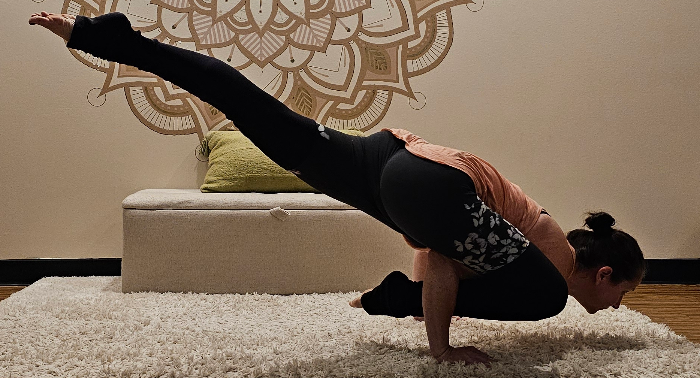The Power of Balance Over Depth in Ashtanga Yoga

In the world of yoga, there's a constant quest for perfection, a desire to master the most advanced poses and sequences. Ashtanga Yoga, a dynamic and demanding practice, is no exception. However, there's a valuable lesson to be learned when we shift our focus from depth to balance. In this article, we explore the significance of balance in Ashtanga Yoga and why it can be more rewarding than striving for extreme depths in your practice.
Ashtanga Yoga, often referred to as the "Eight-Limbed Yoga," is a traditional and rigorous form of yoga that focuses on breath, movement, and a specific sequence of postures. The practice involves a series of dynamic postures, known as asanas, linked together by deep, rhythmic breathing. It's known for its intense physical demands and potential for deep, transformative experiences. While depth in asanas can be awe-inspiring, balance is the key to unlocking the true essence of Ashtanga Yoga.
Balance in Ashtanga Yoga isn't just about physical equilibrium; it extends to the mind and spirit. Let's delve into three aspects of balance in your asana practice:
Physical Balance: Ashtanga Yoga requires strength, flexibility, and coordination. Achieving balance in asanas ensures that you're not pushing your body beyond its limits, reducing the risk of injury. By focusing on alignment and engagement, you can find stability in your postures and work toward a sustainable and injury-free practice.
Mental Balance: The mind plays a crucial role in Ashtanga Yoga. Striving for extreme depth in poses can often lead to frustration and impatience. Balancing your expectations and staying present in each pose is the path to a calmer, more focused mind. This mental equilibrium can be just as transformative as mastering challenging postures.
Spiritual Balance: Ashtanga Yoga is not just about the physical; it's a deeply spiritual practice. The balance between effort and surrender, known as "sthira" and "sukha," respectively, is at the heart of Ashtanga philosophy. By finding this balance, you connect with your inner self, fostering a deeper sense of spirituality and self-awareness.
While striving for depth in your asana practice can be motivating, it can also have some downsides:
Injury Risk: Pushing too hard for depth in poses can lead to injuries, setbacks, and frustration. In Ashtanga, injuries can be particularly challenging to overcome due to the intensity of the practice.
Ego-driven Practice: A focus on depth can fuel ego-driven tendencies, where you might feel the need to compare your practice to others or seek external validation. This can be counterproductive to the spiritual goals of yoga.
Burnout: Trying to master advanced postures too quickly can lead to burnout and a loss of motivation. In contrast, finding balance keeps your practice sustainable and enjoyable.
Prioritizing balance in your Ashtanga practice offers numerous benefits:
Injury Prevention: A balanced approach reduces the risk of injuries, allowing you to practice consistently and grow over time.
Patience and Growth: By balancing depth with mindfulness, you'll discover that progress may be slower but more sustainable. Each small improvement becomes a significant milestone.
Mindful Awareness: Balancing your effort and surrender in asanas enhances your mindfulness, leading to a more profound connection between body, mind, and spirit.
Long-term Commitment: A balanced practice can keep you on the mat for a lifetime, fostering a lifelong relationship with yoga.
Ashtanga Yoga is a journey of self-discovery, and while depth in asanas may be an alluring goal, it's essential to remember that balance is the key to unlocking its true potential. Finding equilibrium in your physical, mental, and spiritual practice not only minimizes the risk of injury but also allows for sustainable growth and a deeper connection with the core principles of yoga. So, let go of the urge to push for extreme depths and embrace the power of balance in Ashtanga Yoga. Your practice will thank you for it.




